#alfred v. kidder
Text
The term “Anasazi” was established in 1927 through the archaeological Pecos Classification system, referring to the Ancestral Pueblo people who spanned the present-day Four Corners region of the United States, including Mesa Verde, Chaco Canyon, Canyon De Chelly, and Aztec. The term is Navajo in origin, and means “ancient enemy.” The Pueblo peoples of New Mexico understandably do not wish to refer to their ancestors in such a disrespectful manner, so the appropriate term to use is “Ancestral Pueblo” or “Ancestral Puebloan.”
According to archaeologist Linda Cordell, “Anasazi” was first applied to the ruins of Mesa Verde by Richard Wetherill, a rancher and trader who was the first Anglo-American known to explore the sites in that area in 1888–89. Wetherill knew and worked with Navajos, and understood what the word meant. The name was further embedded in archaeological circles when it was adopted by Alfred V. Kidder, the acknowledged dean of Southwestern Archaeology, who felt it was easier to use than creating a more technical term.
“It is to my knowledge within our Pueblo communities that we have always referred to our ancestors with proper words to describe their next stage in life with honor and care according to our own language composition,” says Stephanie Oyenque (Acoma Pueblo), IPCC Cultural Education Specialist. “The term ‘Anasazi’ is a word not used within our Pueblo communities. Therefore, how can we, as a universal collective, honor our past people with dignity and respect? Now is the time to take back control of how to accurately describe our ancestral people.”
#studyblr#history#archaeology#colonialism#vocabulary#native americans#puebloans#ancestral puebloans#navajo#usa#utah#colorado#arizona#new mexico#four corners#mesa verde national park#chaco culture national historical park#canyon de chelly national monument#aztec ruins national monument#linda s. cordell#richard wetherill#alfred v. kidder#stephanie oyenque
2 notes
·
View notes
Photo

Jesse Nusbaum and Alfred V. Kidder, Mesa Verde, Colorado
Date: 1908
Photographer: Jesse Nusbaum
Negative Number 139157
#jesse nusbaum#alfred kidder#alfred v. kidder#mesa verde#mesa verde national park#colorado#archaeology#1908#nps
279 notes
·
View notes
Photo
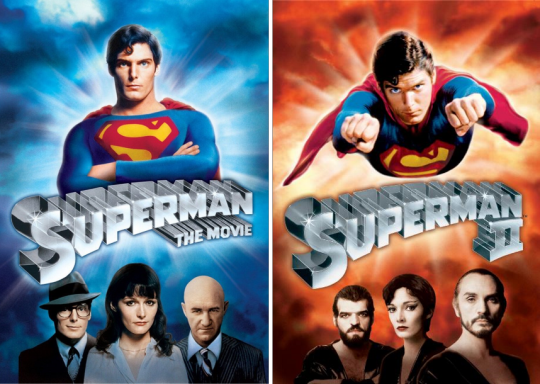


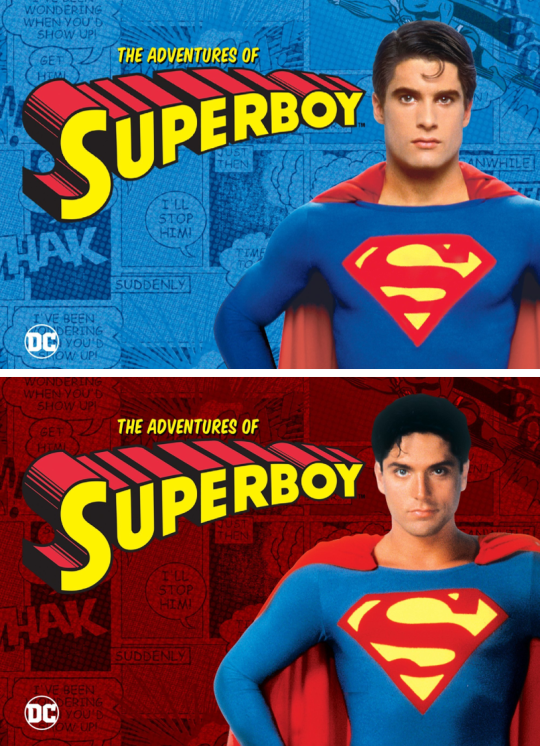
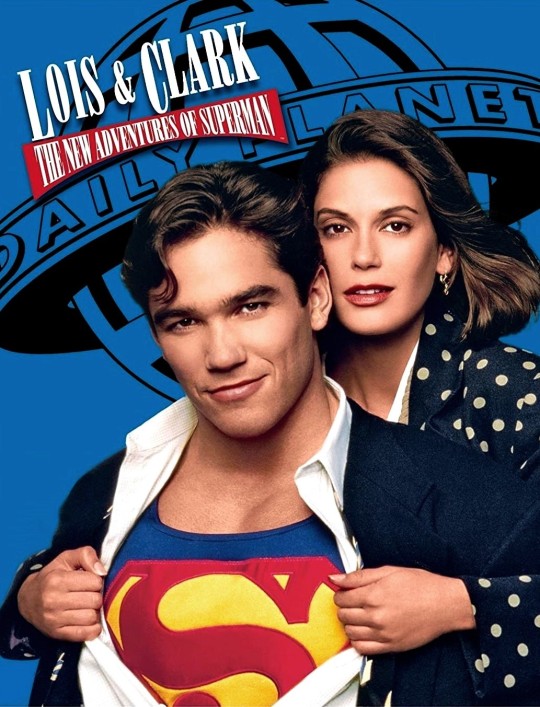

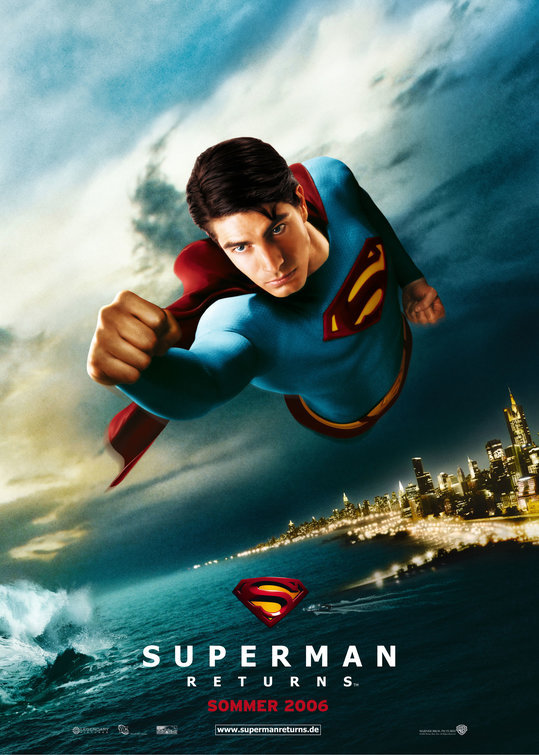



Superman
Live-action movies and series from 1978-present (2021)
Breakdown:
Starring Christopher Reeve as Clark Kent/Superman:
Superman: The Movie (1978) directed by Richard Donner
Superman II (1980) directed by Richard Donner and Richard Lester
Superman I and II were filmed together, with Donner being replaced before the completion of movie 2. Lester was hired, refilmed many scenes, shot new ones, and left others out.
Superman II: The Richard Donner Cut (2006) directed by Richard Donner
Donner’s cut was put together in 2006 after footage was recovered for Superman Returns
Superman III (1983) directed by Richard Lester
Superman IV: The Quest for Peace (1987) directed by Sidney J. Furie
Main cast includes Margot Kidder as Lois Lane, Gene Hackman as Lex Luthor (I, II, IV), Terence Stamp as General Zod (II), among others.
Related film: Supergirl (1984) directed by Jeannot Szwarc, starring Helen Slater as Kara Zor-El/Linda Lee/Supergirl.
Starring John Haymes Newton (Season 1) and Gerard Christopher (Seasons 2-4) as Clark Kent/Superboy:
Superboy (1988-1992) developed by Ilya and Alexander Salkind
Mais cast includes Stacy Haiduk as Lana Lang, among others. On season 3 the series was renamed “The Adventures of Superboy”. The Salkinds were producers for the first 3 Reeve films and also Supergirl.
Starring Dean Cain as Clark Kent/Superman and Teri Hatcher as Lois Lane:
Lois & Clark: The New Adventures of Superman (1993-1997) developed by Deborah Joy LeVine. 4 Seasons.
Starring Tom Welling as Clark Kent:
Smallville (2001-2011) developed by Alfred Gough and Miles Millar. 10 seasons.
Main cast includes Erica Durance as Lois Lane (introduced in season 4), Kristin Kreuk as Lana Lang, Michael Ronsembaum as Lex Luthor, Annette O'Toole as Martha Kent, John Schneider as Jonathan Kent, Justin Hartley as Oliver Queen/Green Arrow (introduced in season 6), among others.
Starring Brandon Routh as Clark Kent/Superman:
Superman Returns (2006) directed by Bryan Singer
The movie is a homage sequel to Superman II
Main cast includes Kate Bosworth as Lois Lane, Kevin Spacey as Lex Luthor, among others.
Starring Henry Cavill as Clark Kent/Superman:
Man of Steel (2013) directed by Zack Snyder
Batman v. Superman: Dawn of Justice (2016) directed by Zack Snyder
Justice League (2017) directed by Zack Snyder and Joss Whedon
Snyder was the director during principal photography, having been replaced in post-production. Whedon was hired, refilmed some scenes, shot additional ones and left much footage out.
Zack Snyder’s Justice League (2021) directed by Zack Snyder
Also known as The Snyder Cut (of the 2017 movie).
Main cast includes Amy Adams as Lois Lane, Michael Shannon as General Zod (MoS), Jesse Eisenberg as Lex Luthor (BvS), Ben Affleck as Bruce Wayne/Batman (BvS, JL), Gal Gadot as Diana Prince/Wonder Woman (BvS, JL), Ray Fisher as Victor Stone/Cyborg (JL), among others.
These movies are part of the DC Extended Universe movie series. General Zod and Kara Zor-El/Supergirl (played by Sasha Calle) can be seen in The Flash (2023).
Starring Tyer Hoechlin as Clark Kent/Superman and Elizabeth Tulloch as Lois Lane:
Superman & Lois (2021-) developed by Todd Helbing and Greg Berlanti
Main cast includes Jordan Elsass as Jonathan Kent, Alex Garfin as Jordan Kent, Emmanuelle Chriqui as Lana Lang-Cushing, Wolé Parks as John Henry Irons/Steel, among others.
Hoechlin made his debut as Superman in 2016 during the second season of Supergirl (2015-2021), starring Mellisa Bennoist as Kara Zor-El/Kara Danvers/Supergirl. He later reappeared in a few episodes of two crossover events of the series in the Arrowverse, side by side with Tulloch’s Lois, who first appeared in 2018, before they got their own series set in a new continuity.
*********
See also: Batman Projects
#superman#clark kent#lois lane#superman and lois#smallville#man of steel#superman 1978#dceu#superman returns#zack snyder's justice league#lois and clark#batman v superman#superman II#superboy series#justice league 2017#cr!superman
108 notes
·
View notes
Text
Batman Movies' Worst Parts Are Always The Love Stories
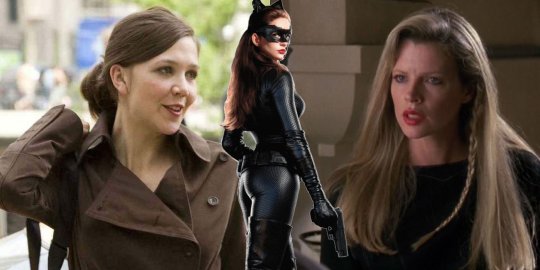
It's widely accepted that some Batman movies are a lot better than others, but the love stories are the worst part on every occasion. For many superheroes, a strong romance is a key part of their character, and the likes of Lois Lane, Steve Trevor and Mary-Jane Watson have become iconic figures after sharing a compelling love story with a comic book crime-fighter. In any genre of fiction, however, there are some characters who simply aren't suited to personal relationships, and this absolutely applies within the world of superheroes.
In the comics, Batman has enjoyed a slew of love interests, but no relationship has developed into an intrinsic addition to his character. Selina Kyle is perhaps Bruce's most notable partner, but even that dalliance has proven troublesome, with the duo's wedding arc receiving a largely negative reception. The problem is even more pronounced on the big screen, where romantic subplots are part and parcel of the Hollywood formula.
Related: The Best Superhero Movie Performances Of The Decade
The Caped Crusader's cinematic love interests range from forgettable to boring, detouring at painfully cringe-worthy. Admittedly, not all of Bruce's love stories are outright poor, but even the better ones remain the least interesting parts of their respective movies. Here, we look back at Batman's movie romances and wonder whether the females in his life have been mishandled, or whether the Dark Knight should always be a lone warrior.
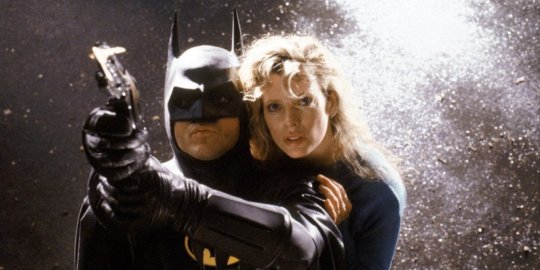
As Batman arrived for his first proper Hollywood outing in 1989, it was inevitable that his softer side would be explored and, accordingly, Kim Basinger was cast as journalist and comic book love interest, Vicki Vale. In fairness, Burton's first Batman movie began Bruce Wayne's romantic career on reasonably solid footing, offering a better arc than most subsequent releases. Vale plays a large part in Batman's story and successfully highlights the disconnect between Bruce's two alter egos but, essentially, she's the archetypal damsel in distress, with the Joker whisking her to the top of a cathedral in the film's climax and Batman rushing to save her.
Similar criticism could be applied to Margot Kidder's Lois Lane, but the difference in character chemistry, the establishment of Lois as a character in her own right and Superman's more natural affinity for romance put her in a different league to Vicki Vale.
It's telling that there was very little fanfare when Vale wasn't included in 1992 sequel, Batman Returns, with Michelle Pfeiffer's Selina Kyle taking on that role instead. Widely regarded as one of the best Batman stories put to film, Burton's return to Gotham City also gave fans what is arguably Batman's strongest big screen love story, as the contrast between Bruce and Selina's relationship - and their two alternate personas - made for a neat, comic-inspired angle. Perhaps the strength in Batman Returns' romantic subplot comes from being highly non-traditional, taking on a dysfunctional turn, as both parties feed each other's costumed impulses. With that said, Batman Returns wouldn't have lost a great deal if Batman and Catwoman's partnership was strictly business.
Unfortunately, Bruce's track record with women would only deteriorate, as Batman Forever introduced Nicole Kidman's Dr. Chase Meridian, a psychologist harboring an obsession with the Dark Knight that her peers would certainly frown upon. This pairing is a whirlwind of cheesy dialogue, cliched tropes and weird conversations about dream-catching dolls, with Schumacher reverting fully to the damsel in distress stereotype. Repeating a trick from the previous two movies, Chase also discovers Bruce Wayne's secret identity, forcing the audience to ponder why he even bothers wearing a mask if he's going to reveal his alter-ego to every single girl that dines at Wayne Manor.
Related: Every Character Who's Been Robin In The Batman Comics
Played by Elle Macpherson, Bruce's new girlfriend in Batman & Robin remains very much in the background - a wise decision given the glut of other problems this film faced.

George Clooney famously claimed that Batman & Robin had killed the franchise, but Christopher Nolan proved that prediction false when he delivered a grittier, darker, more realistic version of the superhero with Batman Begins. By hitting the reset button and grounding Christian Bale's Bruce Wayne in a stark, urban setting, Batman's cinematic career was revived in stunning fashion, as most fans embraced Nolan's style and approach. By far the most derided element of Batman Begins, however, was the romantic angle between Bruce and Katie Holmes' Rachel Dawes.
Whether through a lack of chemistry between Bale and Holmes, a casting misfire or a love story being shoe-horned somewhere it didn't belong, the relationship was easily the most forgettable element of Batman Begins, coming across as a story component demanded by the Hollywood machine, rather than a creatively fruitful addition.
For his seminal The Dark Knight, Nolan nailed the solution to Batman's romantic woes by more or less removing them entirely. Maggie Gyllenhaal replaced Katie Holmes, smoothing out the chemistry problem, and Rachel Dawes became Harvey Dent's lover, before dying an explosive death midway through the film. This setup cast Bruce as the tortured lover, first forced to watch the object of his affections with another man, and then mourning her death, perfectly fitting into the darkness of the character.
After skipping out on a love story in The Dark Knight, Nolan made up for lost time with The Dark Knight Rises by introducing two romantic interests for Bruce: Miranda Tate and, once again, Selina Kyle. Bruce and Tate's relationship hinges on the eventual reveal that the femme fetale is actually Talia al Ghul, and since audiences never truly got behind this twist, neither did they invest in the relationship. While Bruce's connection with Selina ends up being far more genuine, it also misses the mark, perhaps because Bale's character spends most of the movie courting another woman. Without Talia muddying the waters, Anne Hathaway's Selina Kyle perhaps could've been the best love interest of the Nolan era.
Related: Every Batman Movie Ranked, Worst To Best

Over the course of Batman V. Superman and Justice League, Batfleck's romantic arc amounted to little more than Bruce Wayne being mildly flirtatious with Wonder Woman while Alfred cheered from the sidelines and since Aquaman also got in on the act (much to the chagrin of almost everyone), this can hardly be construed as a love story. As with Batman & Robin, this is fortunate, as plenty more problems were at play.
The Batman mantle has now fallen into the lap of Robert Pattinson, who will make his debut in Matt Reeves' The Batman in 2021. Plot details remain unconfirmed at present, but Catwoman is strongly rumored to feature, probably in the capacity of Bruce's on-screen love interest for the third time. Given Pattinson's Twilight history and status as a sex symbol, it's highly likely Warner Bros. will want to explore the softer side of the Batman character once again, but can they avoid the same pitfalls as before?
If anything can be learned from past Batman movie love stories, it's that the traditional dynamic doesn't work. Bruce is an unhappy and damaged individual, and his relationships work best when they reflect this, either by being dysfunctional or unrequited.
More: Becoming Batman: The Possibility Of A Superhero's Best Tips
source https://screenrant.com/batman-movies-love-stories-bad/
0 notes
Text
Theatre Magazine, 1905
Page viii: H.S. Hartfield, Conn. — Q. Will you publish a picture of Maude Adams in “The Little Minister”? — A. See our February, 1905, issue. — Q. What is her summer address? — A. Lake Roakonkoma, on Long Island. — Q. In what will she play next season? — A. Barrie’s new comedy, “Peter Pan.”
Page 184: Reader. — Q. What is Maude Adams going to play next year? A. Barrie’s new play, “Peter Pan.” — Q. What has been her greatest success? A. Probably “The Little Minister.” — Q. Who is the most popular actress in America? A. It is entirely a matter of opinion. — Q. When will Maude Adams play in New York again? A. She plays at the Empire in September. She will visit Mr. and Mrs. James Barrie in England this summer.
Page 200: Some of the Scenes in “Peter Pan,” the New Play by James M. Barrie in which Maude Adams will be seen next season.
Maude Adams will be seen this coming season in a new play by James M. Barrie, called “Peter Pan,” or “The Boy Who Wouldn’t Grow Up.” This piece was first produced at the Duke of York’s Theatre, London, on December 27, 1904, and had a most successful run. The popular author of “The Little Minister” designed it as a Christmas entertainment, and in addition to amusing children by introducing all kinds of whimsical incidents the author had a serious object in view. He has tried, with the usual delightful Barrie touch, to uphold the principle of “loving respect for ladies,” and inculcate a high ideal of one’s coming mother, who, in the course of a long definition, is described as “one who does a child’s work when it is tired and sings it to sleep.” Mr. Barrie has also endeavored to revive the love of children for fairies, who are referred to in an exquisitely written passage as being created by the first laughter of babies.
The play contains among other features, a burlesque of the sanguinary deeds of the old time pirates, sailing beneath skull and cross bones. There are buccaneers and redskins, all painted with vivid colors, and though the case of steel, says an English critic, there plays a lambent humor, more subdued in tone than the flickering light resembling that of a Will o’ the Wisp, which indicates the presence of Peter Pan’s watchful but jealous Fairy attendant, Tinker Bell.
Peter Pan was a child who left his home the day after he was born on hearing his parents form plans as to his future. Wishing never to grow up, or to be anything more than a child, Peter has taken refuge with the fairies, although one attempt to return had led to his finding the window shut and another child in his place. So, refusing any longer to trouble about a Mother’s Love, Peter, attired in a primitive dress of furs, spends his time obtaining recruits for his band, composed of lost children, whose dwelling place is the Never-Never-Never Land, with Indians and buccaneers for neighbors. On several of his expeditions Peter has reached the Darling house, to the alarm of Mrs. Darling and to the loudly expressed indignation of the children’s faithful nurse, Nana, who is no ordinary nurse, but a large Newfoundland. This remarkable animal carries the three Darling children to the bathroom, whether they wish it or not, gives them medicine, turns on the electric light and generally behaves like the average Jane or Susan. For her persistent barking as a sign that danger is near, poor Nana is dragged off by her master from her kennel in the children’s bedroom and is chained up in disgrace in the yard, the consequence being that the children have no one to protect them when Peter Pan pays a visit. A friendship is struck up between them, and Peter Pan gives the Darling children lessons in dying, which enables them to come to the Never-Never-Never Land.
Page 201: There, Peter’s band, comprising Tootles, Nibs, Slightly, Curly and the Twins, are shown as issuing from the hollows in the trunks of trees, which conduct them to a comfortable underground dwelling. One of the children shoots the Flying Wendy by mistake, thinking her to be a Great White Bird, and the girl is appointed “collective” Mother of them all, Peter also assuming the position of Father. Peter, however, also wishes to regard Wendy as Mother rather than as “titular” wife. His paternal responsibilities oppress him with a sense of growing years and he is also puzzled by the desire of an Indian amazon to become his squaw. A coalition is formed between the band of Indians against the pirates, whose leader is Peter’s particular foe. The Indians, keeping watch over the subterraneous dwelling, are attacked in the hight by the pirates, who take captive all the members of the band except Peter. Then follows a finely presented ship scene in which the lads are all but made to walk the plank, ending in the defeat of the pirates who are all thrown overboard. Then Peter is left behind in fairyland and a following scene shows the return of the children to their disconsolate parents to the great joy of the mother — particularly of the father, who had taken to sleeping at nights in the kennel by way of penance, and to the high delight of the once more happy Nana, who is said to be the most lovable character in a play rather heterogeneous and unevenly balanced. “Peter Pan” was a great success during its run in London, where it was beautifully staged with splendid scenery, and the effect of the piece was greatly aided by various well performed dances by music which is by turns plaintive, barbaric and nautical.
The stage sets are as follows: Act one — Our Early Days. Scene one, Outside the House; scene two, Inside the House. Act two — The Never-Never-Neer Land. Scene one, The House We Built for Wendy; scene two, The Redskins’ Camp; scene three, Our Home Under the Ground. Act three — We Return to Our Distracted Mothers. Scene one, The Pirate Ship; scene two, A Last Glimpse of the Redskins; scene three, Home.
Page 212: An Admirer of Maude Adams. — Q. Will Maude Adams play “Peter Pan” and “Alice, Sit-by-the-Fire” next season? A. She will commence next season at the Empire Theatre, this city, in “Peter Pan”; Ethel Barrymore plays “Alice, Sit-by-the-Fire.”
Page 212: If we may judge from the announcements made by the managers the new theatrical season now fairly begun will not be lacking in abundant material. Including Arthur Wing Pinero, all the leading English and American dramatists are well represented, and some of the pieces to be done here, such as Barrie’s fairy play, “Peter Pan,” Alfred Sutro’s “Walls of Jericho,” and André Messager’s “Véronique,” have enjoyed successful runs abroad. “The Pearl and the Pumpkin,” a musical piece by Paul West and John W. Bretton, presented by Klaw & Erlanger at the Broadway, was the first offering of the season in New York, and this was quickly followed at Wallack’s by “Easy Dawson,” the new piece written or Raymond Hitchcock by Edward E. Kidder.
……
Maude Adams, as already announced, will be seen this season as the heroine in James M. Barrie’s whimsical play, “Peter Pan.” Blanche Walsh will continue presenting Fitch’s play “The Woman in the Case,” and William Gillette will be seen in his own play, called “Clarice,” the title role being taken by Marie Doro, Edward H. Southern and Julia Marlowe will continue their theatrical partnership, making at least three new Shakepearian revivals, including “The Taming of the Shrew,” “The Merchant of Venice” and “Twelfth Night.“ W.H. Crane has a new play by George H. Broadhurst and C.T. Davey, entitled “An American Lord,” and will be seen here in it some time in January.
Page viii: Q. When is Maude Adams going to begin her season and is she doing to play “The Little Minister” next year? A. Maude Adams comes to the Empire in November to play “Peter Pan.”
Page v: M.S.S. Boston, Mass. — Q. Will Maud Adams play “The Little Minister” next year? A. No. she has a new play called “Peter Pan.”
Page viii: J.W.M. Weekapaug, R.I. — Q. Can I obtain the orginal Maude Adams’ edition of “The Little Minister”? A. Write to Meyer Bros. & Co., 26 West 33rd St., City. — Q. Will Maud Adams be included in your “Chats with Players”? A. See our September 1903 issue. — Q. Who is to be Miss Adams’ leading man? A. It is not yet announced. — Q. What photographs have you of Maude Adams? A. We cannot enumerate them all. — Q. Will you publish her picture soon? A. See our May, 1905, issue. — Q. Is the report true that she will again be co-star with Mr. Drew? A. No. — Q. Where could I get some pictures of her in “Rosemary” or “The Masked Ball”? A. AT this office. — Q. Will she play both “The Masked Ball” and “Peter Pan” this season? A. Only “Peter Pan.”
Page ix: N.W.D., New York — Q. Will you reproduce other posters of current plays in the same way as you reproduced the English poster of “Peter Pan”? A. We may do so. Thanks for your kind remarks. — Inquirer, New York: Q. Will you publish a short sketch of Edna May’s career? A. See this issue. — Dana Hall, Boston: Q. Where could I procure a “Peter Pan” poster? A. We are trying to secure some. When we do we will announce it.
Page 285: Baltimore, Nov. 9. — From a theatrical standpoint, Baltimore has fared very well so far, the second month of the season being rich in good attractions. At the Academy, Viola Allen in “The Toast of the Town” was followed by Maude Adams in the new Barrie play, “Peter Pan.” Both of these actresses are favorite here and were welcomed by large and fashionable audiences. Another engagement of note was that of Henrietta Croeman in “Mary, Mary, Quite Contrary,” which did very well at Ford’s. ….
……
Buffalo, N.Y., Nov. 11. — The all-star cast in “The Heart of Maryland” opened the Lyceum Theatre this week under the Shubert-Belasco-Fiske combination. Buffalonians are delighted with the prospects of seeing Mrs. Fiske in “Leah Kleschna,” as we have been deprived of this pleasure on account of having no place for her to appear. We are also to have Sarah Bernhardt, Mrs. Leslie Carter, Miss Alice Nielsen, DeWolf Hopper, and many others whom we could not have seen had not this theatre been opened as an independent house. We have seen Maude Adams in “Peter Pan,” Thomas Jefferson in “Rip Van Winkle,” Alice Fischer in “School for Husbands,” and next week comes Blanche Walsh in “The Woman in the Case.” After hovering around Buffalo for two years, the “Babes in Toyland” landed this week. While not the original cast, the company was satisfactory.
Page 290: EMPIRE. “Peter Pan.” Play in 3 as by James M. Barrie. Produced Nov. 6 with this cast: Peter Pan, Maude Adams; Mr. Darling, Ernest Lawford; Mrs. Darling, Grace Henderson; Wendy, Mildred Norris; John, Walter Robinson; Michael, Martha McGraw; Nana, Charles H. Weston; Tinker Bell, Jane Wren; James Hook, Ernest Lawford; Smee, Thomas McGrath; Starkey, Wallace Jackson; Great Big Little Panther, Lloyd Carleton; Tiger Lily, Margaret Gordon; Lisa, Anna Wheaton.
“Peter Pan” is a delightful play — for the elect! This may mean you and it may not. “Every time a baby laughs a fairy is born.” If you agree with this you will find much to enjoy in Mr. Barrie’s charming idyll of child life. If, on the contrary, it conveys to you no meaning, you had better avoid the Empire Theatre and go instead to see — the Rogers Brothers.
“Peter Pan” is an epic of childish joy and fancy; it is the apotheosis of youth and all its high-colored fictions, and Barrie is probably the only writer in English letters today capable of giving this whimsical conception dramatic form. Everything that surges, unreasoning, though the childish brain, all the extravaganzas, unrealities, terrifying dangers, delights, enthusiasms — all these infantile emotions are woven by the dramatist into a spectacular entertainment that is full of exquisite tenderness, sentiment and poetry, and in the lovable, elfish Peter Pan, the boy who did not want to grow up and ran away from home rather than become President, the English poet has given Maude Adams a part that suits her better than anything she has done since Lady Babbie.
No man who does not love children could have written this play, which is redolent of the nursery, and which has the miraculous effect of rejuvenating all who witness it. some of our superannuated, dyspeptic critics profess they are unable to comprehend this exquisite fantasy. Pity them! They could never have been young themselves. They were born old with all their teeth cut.
Mothers will like “Peter Pan” because it symbolizes Mother Love. The only regret that Peter feels when he runs away from home is because he leaves his dear mother behind, and when he induces the Darling children to fly away with him to the Never-Never-Never Land, he insists that Wendy, the eldest girl, shall act as Little Mother to them all.
A detailed account of the plot of this unique piece appeared in a recent issue of this magazine. It has had a long run in London, and this success should be repeated here if American theatre-goers care for dainty dramatic fare of this sort. Judging by the rapt attention with which the play was followed on the opening night, New York audiences, sophisticated as they may be, still have a corner in their hearts for the time when the sun was always smiling and the birds were always singing, and when the life of Tinker Bell — the invisible fairy whose presence throughout the play is indicated only by a dancing light — is in peril, and Peter Pan in keen distress comes down to the footlights and explains that Tinker Bell must die unless they (the audience) believe in fairies, the whole house responded to the appeal with “We do! We do!” expressed in applause. And so Tinker Bell’s life is saved!
The coming of Peter Pan to the Darling’s nursery after the children have been put to bed by the faithful St. Bernard dog Nana, who officiates as nurse, the lessons in flying and subsequent flight of the children thought he window to the Never-Never-Never Land; the arrival in the Magic Country, infested with strange animals — the Monster Ostrich, the Man-Eating Crocodile, with a cock ticking in its stomach, and the Fierce Wolves, driven away by the children looking Through Their Legs — the building of the House in the Woods with a Silk Hat for a chimney and a Lady’s Slipper for a door-knocker, the attack by the Savage Redskins and by the Bloodthirsty Pirates, the retreat to the Underground Cavern, the Capture of the Children, who are taken Prisoners to the Pirate Ship and sentenced to Walk the Plank; the Rescue by Peter Pan, the worsting of the pirates and the return of the Darling Children to their Anxious Mother — these are the …..
Page xxii: Washington, D.C., Nov. 9. — The acquisition of the Lafayette Opera House by the Belasco and Shubert forces has revolutionized theatrical conditions here. We are to have one new theater this month to play the popular-priced combinations formerly seen at the Lafayette, and the impetus given to theatrical affairs has caused negotiations to be opened which may lead to the construction of two more playhouses by next season. The Belasco opened Oct. 23 to a fashionable audience with Blanche Bates in “A Girl of the Golden West,” followed in weekly successsion by “Mrs. Temple’s Telegram,” “Darling of the Gods,” “Loveland,” and “Heart of Maryland.” Business has been uniformly large. “Peter Pan,” with Maude Adams, was presented at the National on Ct. 17. The audience heartily approved the piece. On the ensuing week, Herviern’s powerful drama, “The Labyrinth,” was seen for the first time in America, with Olga Nethersole as the star.
0 notes
Photo

pogphotoarchives:Jesse Nusbaum and Alfred V. Kidder, Mesa Verde,... http://ift.tt/2vMYIwW
0 notes
Photo

Archaeologist Alfred Kidder and friend after Utah trip
Photographer: Jesse Nusbaum
Date: 1912
Negative Number 060647
153 notes
·
View notes